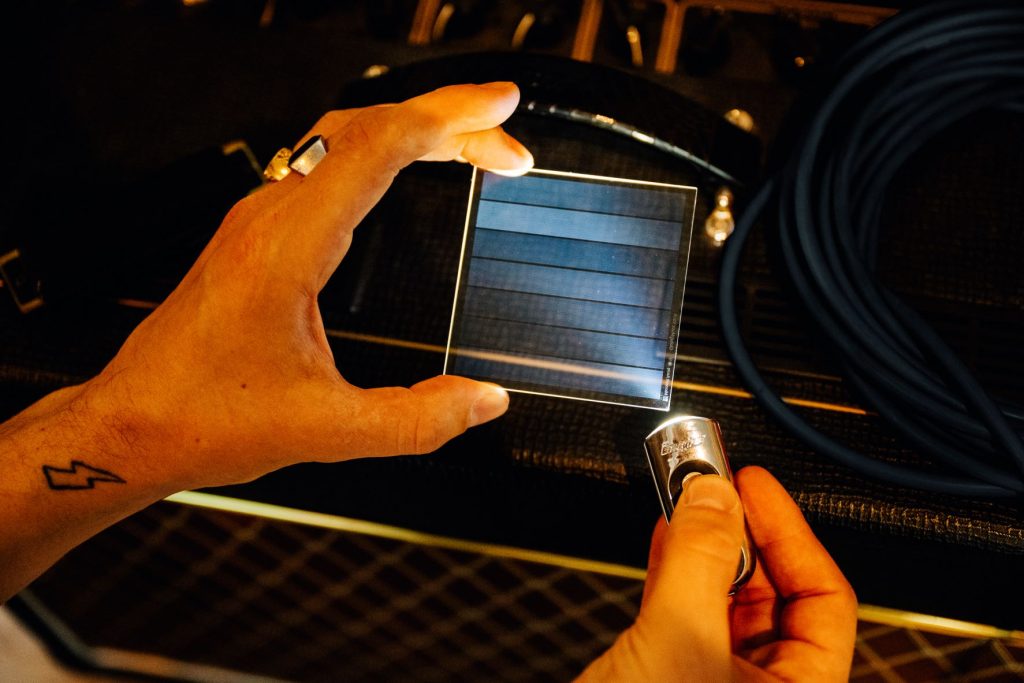Global Music Vault’s Mission to Preserve Music for 10,000 Years
This archival project stores data on Microsoft’s new, silica glass platters

The 21st century is characterized by rapid musical innovation, from streaming thousands of songs online with a click of a button to storing albums on the cloud. Within all this progress, though, one element hasn’t advanced like the others: longevity. In comparison to hieroglyphs, which have endured nearly 5,00 years, music storage is ephemeral, beginning to deteriorate as early as five years on a hard drive or 15 years when stored as CDs. To solve this preservation problem, Global Music Vault is on a mission to safeguard the world’s music for as long as 10,000 years.

To do so, the organization Global Music utilizes a vault that is specifically dedicated for music capsules. It’s located deep inside Norway’s arctic mountains—the same mountains where the Svalbard Global Seed Vault, a vault dedicated to preserving the world’s seeds, is located. Because the music data will run into the tens of petabytes per year, archiving them is complex, requiring a solution that can hold a large volume of data while protecting against its fragility. To navigate these challenging conditions, Global Music turned to Microsoft’s new glass platters, the world’s first storage technology designed and built from the media up, specifically for the cloud.

The platters stem from a Microsoft research project dubbed “Project Silica,” which uses recent discoveries in ultrafast laser optics and machine
learning. As such, the glass is capable of holding 100GB of data or 20,000 songs for around 10,000 years.
The platters are akin to a glass hard drive that’s read like a CD. The proof-of-concept glass platter measures three by three inches and begins as quartz glass. Microsoft uses the hyper-fast femtosecond laser to etch data as 3D patterns into the glass, which a second laser can then read and translate (via algorithms) into songs. Glass, an inert material, offers an improved level of security for data keeping, as it is fully resilient to electromagnetic pulses and challenging environmental conditions. In other words, the glass can be baked, boiled, scoured, flooded and more, and the data will still be preserved.

The silica glass will contain music and audio and visual contributions from from Sweden’s Polar Music Prize, New Zealand’s Alexander Turnbull Library Collections, the International Library of African Music and the International Music Council, which contributed work from the Orchestra of Indigenous Instruments and New Technologies.
The vault will also store a selection of tracks from mixed-media musician Beatie Wolfe, whose work in pioneering new formats (including beaming her music into space) is an apt pairing for the innovative archival endeavor. “From my perspective I wanted to get involved because my work is about bridging the tangible and digital to get the best of the old and the best of the new,” Wolfe tells us. “This feels like the epitome of that for music preservation and, in an age where music has become increasingly disposable and devalued, this is a wonderful reminder of its longterm value for humanity, and we need longterm thinking now more than ever as we face this climate emergency.”

As the music industry and modern culture at large increasingly focus on creating new works at a rapid pace, Global Music Vault’s project honors music already in existence, working to preserve its longevity with paradigm-breaking technology.
Hero image courtesy of Global Vault Music












